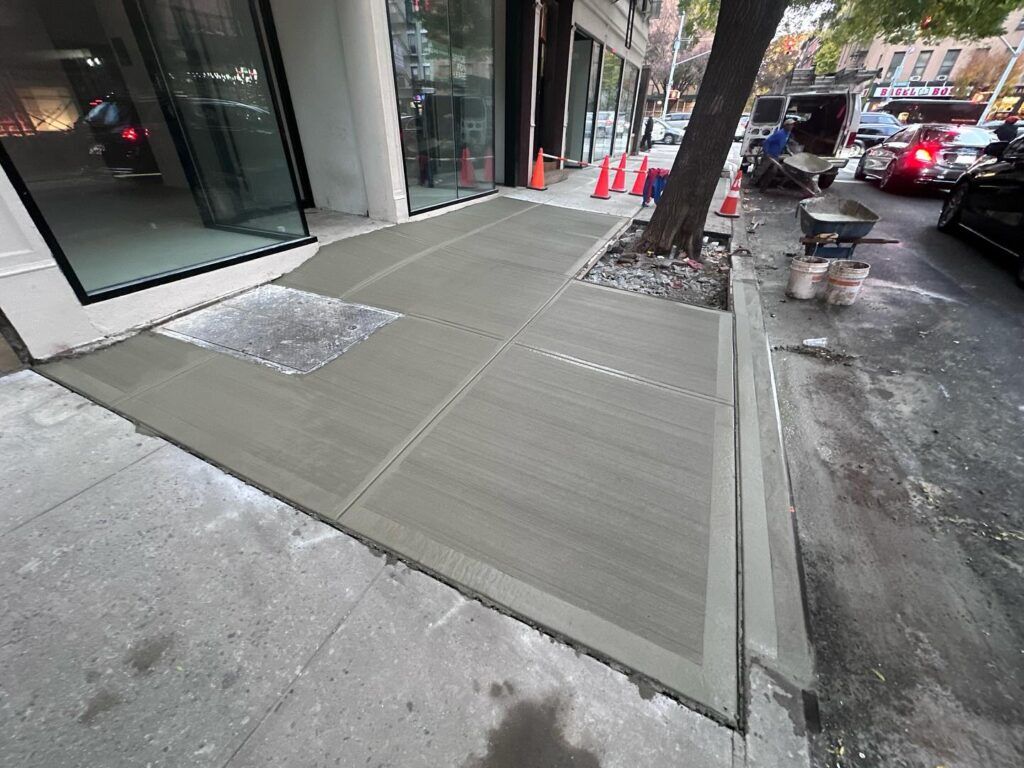Tripping over a broken sidewalk in NYC is not only embarrassing, but it can be legally devastating for property owners. Knowing your responsibility can save you from spending a fortune on lawsuits and ensure pedestrian safety.
What is NYC Administrative Code 19-152?
Property owners are responsible for the sidewalks adjoining their buildings, as stated in NYC Administrative Code 19-152. If disregarded, this legal requirement can result in severe consequences.
Property owners are responsible for:
- Keeping sidewalks in good repair
- Ensuring they’re reasonably safe for pedestrian use
- Addressing hazardous conditions promptly
- Paying for repairs when violations occur
The law effectively transfers liability from the city to property owners, making sidewalk upkeep the responsibility of property owners.
Understanding Your Legal Liability
Sidewalk negligence can spell financial and legal disaster, with severe consequences for property owners in NYC.
Personal Injury Claims
When someone gets injured on a broken sidewalk adjacent to your property, you could face a personal injury lawsuit. NYC courts consistently hold property owners liable under Administrative Code 19-152.
The key factors courts consider include:
- Whether the defect was visible and substantial
- How long the dangerous condition existed
- If the property owner had a reasonable opportunity to fix it
- The severity of the pedestrian’s injuries
Financial consequences
Sidewalk-related lawsuits often result in steep settlement costs, ranging from tens of thousands to hundreds of thousands of dollars.
Beyond lawsuit settlements, you’ll also face:
- Legal defense costs
- Increased insurance premiums
- Potential criminal charges for willful neglect
- City-imposed fines and penalties
Common Sidewalk Violations and How to Address Them
Knowing what to look for and how to respond can save you from costly legal battles and keep pedestrians safe.
Identifying Problem Areas
Regular sidewalk inspections help you catch issues before they become legal nightmares. Look out for these common violations:
- Cracks wider than half an inch
- Uneven surfaces with height differences exceeding half an inch
- Missing or broken concrete sections
- Tree root damage causing upheaval
- Ice and snow accumulation (yes, this counts too!)
The Repair Process
When you discover sidewalk damage, act quickly. Document the problem with photos, get quotes from licensed contractors, and begin repairs immediately.
Prevention is Your Best Defense
Proactive maintenance is far cheaper than reactive repairs. Schedule regular inspections, trim tree roots before they cause damage, and address small cracks before they become major hazards. Your wallet—and your peace of mind—will thank you.
Navigating Insurance and Protection
Most general liability insurance policies cover sidewalk-related claims, but coverage varies significantly. Review your policy and consider umbrella coverage for additional protection.
Remember, ignorance isn’t a valid defense under NYC Administrative Code 19-152. Whether you knew about the dangerous condition or not, you’re still liable as the property owner.
Taking Action: Your Next Steps
Don’t let a cracked sidewalk crack your financial security. Understanding NYC Administrative Code 19-152 is just the first step—taking action is what matters most. Regular maintenance, prompt repairs, and adequate insurance coverage are your best defenses against costly liability claims.
Ready to protect your property and ensure compliance with NYC sidewalk regulations?
Contact the experts at https://nycsidewalkviolations.com/ today for professional sidewalk repair services and comprehensive property maintenance solutions. We understand the legal requirements and can help you avoid costly violations while keeping pedestrians safe.

